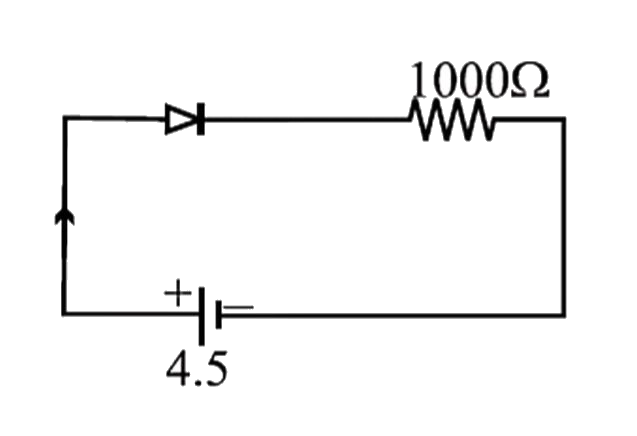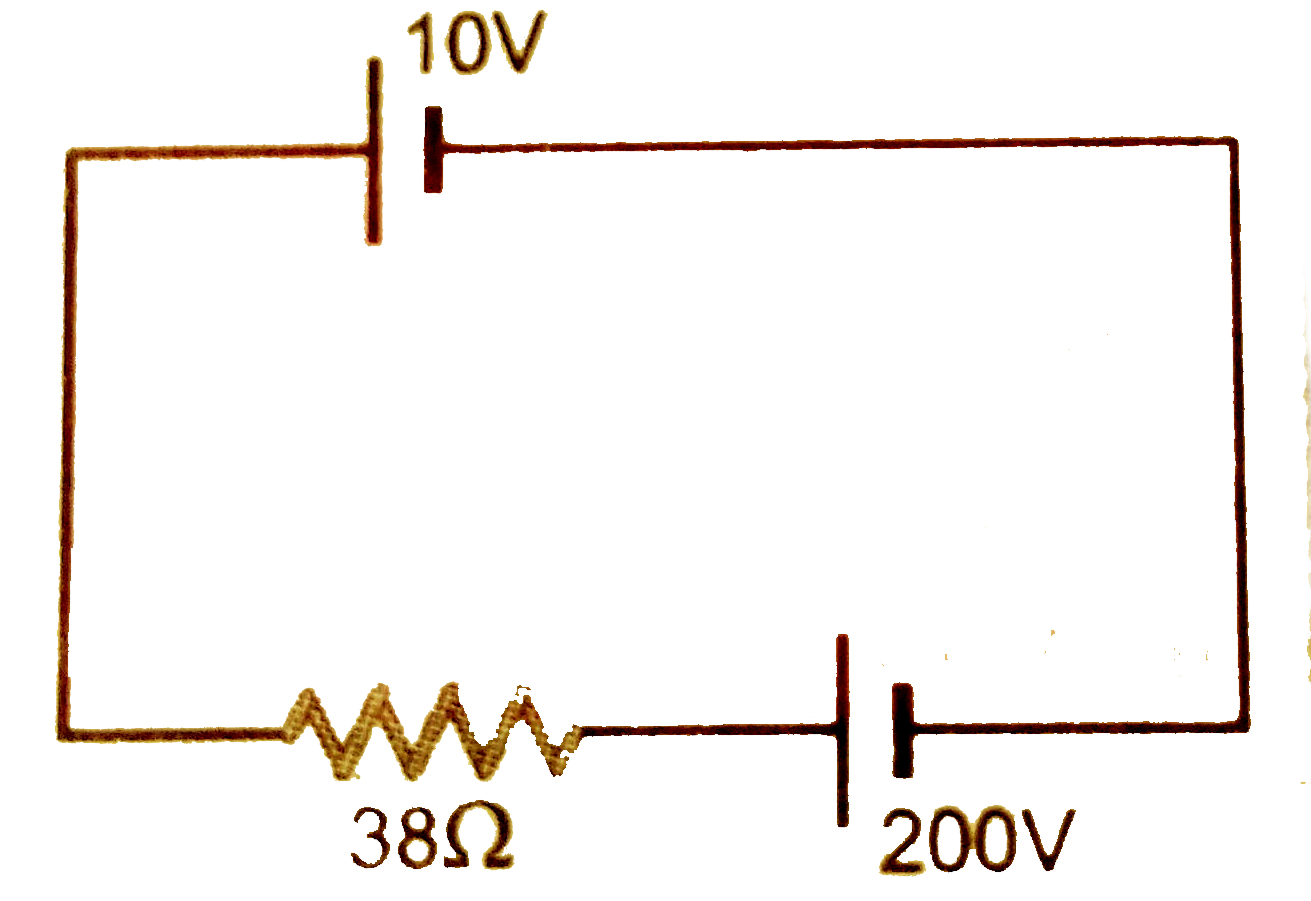A p n junction diode is connected to a battery of 2 v and a resistance of 8 ohm as shown in figure calculate the current passing through the resistor
To solve the problem of calculating the current passing through the resistor when a p-n junction diode is connected to a battery of 2V and a resistance of 8 ohms, we need to follow these steps:
Step 1: Understand the Circuit Configuration
The p-n junction diode is connected in reverse bias to a battery of 2V, which means the positive terminal of the battery is connected to the n-type material of the diode, and the negative terminal is connected to the p-type material. In this configuration, the diode does not conduct current under normal circumstances.
Step 2: Identify the Conditions for Current Flow
In reverse bias, the diode does not allow significant current to flow. The current that does flow is known as the reverse saturation current, which is typically very small (in the microampere range) and can often be neglected in basic calculations unless specified.
Step 3: Apply Ohm's Law
Ohm's Law states that V=I×R, where:
- V is the voltage across the resistor,
- I is the current through the resistor,
- R is the resistance.
In this case, since the diode is reverse-biased, the voltage across the resistor is effectively 0V (as the diode blocks current flow), leading to:
I=VR=0V8Ω=0A
Step 4: Conclusion
Since the diode is reverse-biased, the current passing through the resistor is 0 A.
Final Answer
The current passing through the resistor is 0 A.
---
The p-n junction diode is connected in reverse bias to a battery of 2V, which means the positive terminal of the battery is connected to the n-type material of the diode, and the negative terminal is connected to the p-type material. In this configuration, the diode does not conduct current under normal circumstances.
In reverse bias, the diode does not allow significant current to flow. The current that does flow is known as the reverse saturation current, which is typically very small (in the microampere range) and can often be neglected in basic calculations unless specified.
Ohm's Law states that V=I×R, where:
- V is the voltage across the resistor,
- I is the current through the resistor,
- R is the resistance.
Since the diode is reverse-biased, the current passing through the resistor is 0 A.
The current passing through the resistor is 0 A.
Topper's Solved these Questions
- SEMICONDUCTOR ELECTRONICS METERIALS DEVICES AND SIMPLE CIRCUITS BOOK - MODERN PUBLICATIONCHAPTER - SEMICONDUCTOR ELECTRONICS METERIALS DEVICES AND SIMPLE CIRCUITS EXERCISE - TOUGH & TRICKY PROBLEMS
10 Videos
- SEMICONDUCTOR ELECTRONICS METERIALS DEVICES AND SIMPLE CIRCUITS BOOK - MODERN PUBLICATIONCHAPTER - SEMICONDUCTOR ELECTRONICS METERIALS DEVICES AND SIMPLE CIRCUITS EXERCISE - NCERT FILE SOLVED (TEXT BOOK EXERCISES )
30 Videos
- SEMICONDUCTOR ELECTRONICS METERIALS DEVICES AND SIMPLE CIRCUITS BOOK - MODERN PUBLICATIONCHAPTER - SEMICONDUCTOR ELECTRONICS METERIALS DEVICES AND SIMPLE CIRCUITS EXERCISE - PRACTICE PROBLEMS
26 Videos
- RAY OPTICS AND OPTICAL INSTRUMENTSBOOK - MODERN PUBLICATIONCHAPTER - RAY OPTICS AND OPTICAL INSTRUMENTSEXERCISE - CHAPTER PRACTICE TEST
14 Videos
- WAVE OPTICALBOOK - MODERN PUBLICATIONCHAPTER - WAVE OPTICALEXERCISE - CHAPTER PRACTICE TEST
7 Videos
Similar Questions
A p -n junctin diode is connected to a battery of 2 V and a resistance as shownin the adjoining calculate the curernt passing through the resistor

View SolutionA p-n junction diode in forward bias is connected to a battery of 4 V and a resistance of 80 ω as shown in the ajoining determine the maximum current in the circuit barrier potential of p-n diode is 0.2 V

View Solution
Knowledge Check
In the figure shown, current passing through the diode is
 A0.1AB0.02ACzeroD0.01A
A0.1AB0.02ACzeroD0.01AA zener diode of 30V is connected as shown with 90V battery as shown in figure. Calculate the current passing through the diode.
 A7.5mAB12mAC4.5mAD10mA
A7.5mAB12mAC4.5mAD10mAIn a p- n junction diode not connected to any circuit,
Athe potential is the same everwhereBthe p- type side is at a bigher potential that the n - type sideCthen is an electric at the junction directed fromDthere is an electric fied at the junction directed from the p- type side to the n - type side
A 6-V battery is connected across a 5−Ω resistor.Calculate the current passing through the resistor .
View SolutionA P-N junction diode connected to a battery of e.m.f. 4.5 V and an external resistance of 1000Ω. What is the value of current in the circuit, if potential barrier in the diode =0.5V

View Solution
A network of resistors is connected to a battery of negligible internal resistance, as shown in figure. Calculate the equivalent resistance between the point A and D, and the value of the current I3.
View SolutionA 10 V battery of negilgible internal resistance is connected across a 200V battery and a resistance of 38Oemga as shown in figure.
 . Find the value of current in the circuit.
. Find the value of current in the circuit.
View SolutionIn a p-n junction diode without any battery
View Solution
